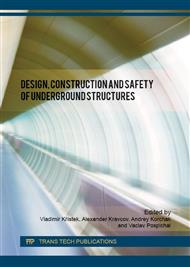p.1
p.11
p.17
p.25
p.33
p.36
p.45
p.51
Influence of Walkway Design on the Evacuation of Passengers within a Fixed Guideway Transit System
Abstract:
With the rapid growth of cities it is considered that around 75% of the world’s population will live in cities by 2050. Estimates are that the population moving to cities are approximately 172,800 persons per day [1]. This increased demand on cities has resulted in further technological advancement in terms of infrastructure. Although the rail industry has significantly advanced in terms of driverless capability, open gangway train systems and real time monitoring it is important that our awareness of fire safety advances at the same rate.In the past, tunnel and operational fire strategies considered assisted evacuation for persons with reduced mobility (PRM) by on-board staff members, while allowing able bodied persons the ability to self-evacuate to a point of safety outside the incident tunnel. As we move into a future with further automation and less on-board train staff, it may be time to re-evaluate our current thinking in terms of tunnel evacuation strategies for Persons with Reduced Mobility.The aim of this paper is to open the discussion in terms of fire safety in tunnel systems, in particular provision of walkways and the effect on egress within tunnels. The widths of walkways are key factors in the pace at which passengers can disembark from a train onto a walkway.Although there is an active effort to improve walkway provisions within tunnels, the minimum acceptable width limit is still open for debate. This ultimately comes down to a balance between cost (monetary, environmental) and level of acceptable risk.
Info:
Periodical:
Pages:
11-16
Citation:
Online since:
July 2016
Authors:
Price:
Сopyright:
© 2016 Trans Tech Publications Ltd. All Rights Reserved
Share:
Citation:


